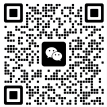铭信提供:北美计算机代写、NetworkSocket程序代写、商科代考、代写、research 代考、exam代考、paper代写、北美英语exam代考、论文代写、北美代写、英语毕业exam代考、论文代写、Dissertation代写、英语代写、英国exam代考、论文代写、文科online exam/quiz代考、网课代考、essay代写、美国经济学代考、代写、Turnitin查重、代考、exam代考、paper代写、留学生online exam/quiz代考、网课代考、essay代写、assignment代写、exam代考、report代写、留学生exam代考、论文代写、留学生代考、留学申请文书代写...

Peer Review and Feedback of MA pedagogic documentation教育学文献的同行评定与反应
Author:作者:
Peer Reviewer:同行评定:
Please provide comments on your personal reflections as a result of reading the work:请就阅览本书后的个人考虑提出意见:
在曩昔有关镜子测验的研讨中,研讨人员提出并询问了有关孩子行为的问题,然后评估了孩子的体现。然而,XX以为直接向儿童提问会使儿童难以表达清楚,这或许影响研讨结果的正确性。XX主张用亲近调查的方法来了解孩子在镜子前的行为,这更有利于发现孩子的真正爱好和想法。XX的这一主张含义重大,由于其他研讨也表达了相似的观念,例如Asendorpf(1996)指出,传统测验的缺陷在于,它们会导致错误的否定,由于有些孩子能够经过镜子来辨认自己,但由于特性或心理特点,他们不采取符号导向的行为,由于教师的鼓舞和指导,这样的孩子不该被视为不认知者。XX提出的亲近调查法在必定程度上能够避免假阴性。
In past research related to mirror tests, the researchers prompted and asked questions about the children’s behavior and then evaluated the children’s performance. However, XX believed that direct questioning to children would make it difficult for the children to express clearly, which might affect the correctness of the research results. XX proposed using a close observation method to understand children’s behavior in front of mirrors, which was more conducive to discovering children’s real interests and ideas. This suggestion from XX is significant because other studies have expressed similar views, such as what Asendorpf (1996) pointed out that the shortcomings of traditional tests are that they can lead to false negatives, because some children can recognize themselves through mirrors, but because of personality or psychological characteristics, they do not take mark-directed behavior because of a teacher's encouragement and guidance, such children should not be regarded as nonrecognizers. The method of close observation proposed by XX can avoid false negatives to a certain extent.
XX以为,在具体的教学实践中运用游戏教学法,能够更好地进步孩子的固执、满足感、求知欲,更好地实现师生之间的杰出联系。XX的这一观念与卡茨(1996)和弗罗贝尔的游戏理论是共同的,虽然这一观念受到了一些质疑,但XX依然坚持这种教学方法,由于这种教学方法关于了解儿童的心里思维有着重要的含义。儿童特性的开展与儿童智慧的开展。
传统的镜像测验主要使用符号导向行为来判断儿童是否具有自我意识,但儿童在镜像中有多种行为,而不仅仅是符号导向行为。例如,XX调查到孩子们会看镜子,在镜子里做鬼脸,表达各种情绪,模仿别人的表情,甚至在镜子里喃喃自语。XX剖析了这些行为是否能显示出儿童有自我意识,这些行为发生的机制是什么,在镜子中鼓舞儿童体现出什么样的行为更有利于培养教学中的自我意识,这些都需要o有待进一步研讨和解释。XX的调查关于进步幼儿教育中镜检相关研讨的广度和深度具有重要含义。
XX figured that the use of play teaching method in specific teaching practices can better improve children's willlingness, satisfaction, eagerness, and can better achieve a good relationship between teachers and children. This view of XX’s is consistent with what Katz (1996) believed and Frobel's theory about play, although this view has been met with some doubts, and XX still insists on this teaching method, because such teaching method is of great significance for understanding children’s inner thoughts, the development of children's personality and the development of children's wisdom.
Traditional mirror tests mainly use mark-directed behavior to judge whether children have self-consciousness, but children have a variety of behaviors in the mirrors, not just mark-directed behavior. For example, XX observed that children would look in the mirrors and would grimacing in the mirrors, expressing all kinds of emotions, imitating the expressions of others, even talking to themselves in the mirrors. XX analyzed that whether these behaviors could show that children have self-consciousness, what mechanisms are produced by these behaviors, what kind of behavior in the mirrors that children should be encouraged to show is more conducive to fostering self-consciousness in teaching, these all need to be researched and interpreted in further research. XX's observations are very meaningful for improving the breadth and depth of studies related to mirror test in early childhood education.
XX recognized that conversations could better maintain a good relationship between teachers and children, and could better understand children’s personality, abilities to develop children's social and communication skills. However, he also found that playing with adults helps children to develop relationships with their children, and there are few conversations in the process, but they can still share ideas with their children and learn about their children’s information. His point of view shows the importance of play, which contributes to a good understanding and training of children's personality, ability and so on.
Please provide some points in the document that might need clarification, or would benefit from more development:
XX found that the use of mirror tests to cultivate children's self-consciousness feasible, but this method has also been questioned. For example, Nielsena and Dissanayakeb (2004) commented that the emergence of pretend games, mirror self-identification, synchronic imitation and delayed imitation were reflected in the normal development of human babies. They research shows that delayed imitation is considered as a prerequisite for infants and toddlers to master the other three skills. These studies show that it is not enough to train children's self-consciousness through looking in the mirrors, because the ability of mirror self-recognition is also affected by other abilities. Therefore, more comprehensive measures must be taken to cultivate children's self-consciousness.
XX suggested in his article that play such as looking at themselves in the mirrors or autodyne played a positive role in establishing a good relationship between children and teachers, but he also raised the question of what specific methods and principles could help teachers to use mirrors or autodyne to maintain a good relationship with students. The study by Tarr (2010) presents a good way to answer XX's question that play and the record of play cannot be used to satisfy the so-called teaching purpose, and it should take to stimulate and satisfy children’s curiosity as a principle, while teachers should actively participates in the process of play, instead of being an objective observer to supervise children’s play.
XX proposed in his article that documentation could demonstrate his teaching philosophy and value, as well as understand children’s performance. However, in terms of early childhood education, documentation should also have some other functions. For example, recording is not only teachers’ responsibility, but also an open collaborative process in which teachers, children and even parents can participate, which is positive for raising children's interest in learning and improving parents’ understanding and support for teachers’ work, as well as promoting teachers’ own teaching skills (Tarr, 2010).
What work with pedagogical documentation focuses is in the processes of learning, rather that knowledge or goals it aims to obtain. Learning can not be predicted, planned, supervised or evaluated based on predefined standards. Moreover, pedagogical documentation should be treated as a means to advocate children as an active meaning-maker of the world where they are in, rather than a consumer of predetermined knowledge.
Please provide some recommendations for further reading:
The future research and application of tests in early childhood education can be in-depth from three aspects. First, the influence of personality and psychological factors on the generation and cultivation of children's self-awareness should be explored, and mirror tests should be optimized to eliminate the influences of personality and psychological factors on the test results. It should also explore how to combine mirror tests and other educational methods to comprehensively develop children’s self-awareness, followed by further discussion and analysis of specific methods and principles such as teaching and communication skills, and the use of scientific and technological means in helping teachers to maintain a good relationship with children through the use of mirrors or play of autodyne. Finally, it should discuss how teachers analyze and display documents so that early childhood education can better achieve its intended purpose.
References
Asendorpf, J. B. (1996). Self-awareness and other-awareness. II: Mirror self-recognition, social contingency awareness, and synchronic imitation. Developmental Psychology 32(2),313-321.
Katz, L.G., (1996). The contribution of documentation to the quality of early childhood education, ERIC Digest, EDO-PS-96-2.University of Illinois, Urbana.
Lemon, N. (2007). Take a photograph: teacher reflection through narrative. Reflective Practice, 8(2), 177-191.
Nielsena, M. and Dissanayakeb, C. (2004). Pretend play, mirror self-recognition and imitation: a longitudinal investigation through the second year. Infant Behavior & Development 27, 342–365.





